Jackie Chan was born in Hong Kong on April 7th, 1954. His parents, Charles and Lee-lee Chan named him Chan Kong-sang which means "born in Hong Kong." Jackie weighed a whopping 12 pounds when he was born and his mother required surgery to deliver him. Jackie's parents were so poor that they had to borrow money from friends to pay the doctor. Although Jackie's parents were poor, they were lucky enough to have good jobs at the French embassy in Hong Kong. Charles was a cook and Lee-lee was a housekeeper. Together, the Chan family lived on the Peak in Hong Kong. When Jackie was little, his father would wake him early in the morning and together they would practice kung fu. Charles Chan believed that learning kung fu would help build Jackie's character, teaching him patience, strength, and courage. When Jackie was 7 years old his father took a job as the head cook at the American embassy in Australia. He could not bring Jackie with him, so he enrolled him in the China Drama Academy where Jackie would live for the next 10 years of his life. During Jackie's time at the school, he learned martial arts, acrobatics, singing, and acting. The school was meant to prepare boys for a life in the Peking Opera. Chinese opera was very different from any other kind of opera. It included singing, tumbling, and acrobatics as well as martial arts skills and acting. Students at the school were not treated kindly at all. They were given just enough food to survive. They were beaten if they disobeyed or if they made mistakes. It was a very harsh and difficult life but Jackie had nowhere else to go, so he stayed. He hardly saw his parents at all for many years. During his time at the China Academy, Jackie made his acting debut at age eight in the Cantonese movie "Big and Little Wong Tin Bar." He later teamed with other opera students in a performance group called "The Seven Little Fortunes." As Jackie got older he worked as a stuntman or an extra in the Hong Kong film industry. When Jackie was 17, he graduated from the China Drama Academy. Unfortunately the Chinese opera was not very popular anymore, so Jackie and his classmates had to find other work. This was difficult because at the school they were never taught how to read or write. The only work available to them was unskilled labor or stunt work. Each year many movies were made in Hong Kong and they were always looking for young, strong stuntmen. Jackie took these jobs and soon earned a reputation for being fearless. Jackie Chan would try anything. Click here to read about some of Jackie's injuries Over the next few years, Jackie worked as a stuntman in Hong Kong. When the Hong Kong movie industry began to fail, he was forced to go to Australia to live with his parents. He worked in a restaurant and on a construction site. It was there that he got the name "Jackie." A man named Jack who worked on the site had trouble pronouncing "Kong-sang" and started calling Jackie "little Jack." That soon became Jackie and the name stuck. Jackie was very unhappy in Australia. The construction work was difficult and boring. One day Jackie received a telegram from a man named Willie Chan. Jackie didn't know it but Willie would end up becoming his best friend and manager. Willie Chan worked in the Hong Kong movie industry and was looking for someone to star in a new movie being made by Lo Wei, a famous Hong Kong producer/director. Willie had seen Jackie when Jackie was working as a stuntman and had been impressed. Jackie called Willie and they talked. Soon Jackie was on his way back to Hong Kong to star in "New Fist of Fury." It was 1976 and Jackie Chan was 21 years old. Once Jackie got back to Hong Kong, Willie Chan took control over Jackie's career. To this day Jackie is quick to point out that he owes his success to Willie. The movies that Jackie made for Lo Wei were not very successful. The problem was that Jackie's talents were not being used properly. It was only when Jackie was able to contribute his ideas that he became a star. He brought humor to martial arts movies; his first success was "Snake in Eagle's Shadow." It was the first movie that Jackie had a part in making and it was a huge hit! This was followed by "Drunken Master" (another blockbuster) and Jackie's first ever directing job, "Fearless Hyena." All were big hits. Eventually Jackie ended up in the United States to make the movie "The Big Brawl." It was not successful. Next came "Cannonball Run" which was successful in the US and Japan, but not in Hong Kong. Jackie was very discouraged and went back to Hong Kong to continue making the action-comedy movies he had become famous for. In 1985, Jackie went back to the States to make "The Protector" which was also a flop. He left the US once again. It would be 10 years before he returned to make the successful "Rumble in the Bronx." After that came "Rush Hour," "Shanghai Noon," and "Rush Hour 2." Jackie Chan had achieved his dream of being a superstar in America. 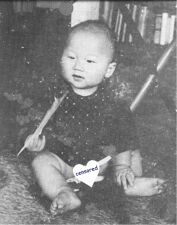 ©2002 Katharine Schroeder/The Official Jackie Chan Fan Club for Kids No part of this website may be reproduced or distributed without permission. |  Jackie with his Mom, Lee-lee and his Dad, Charles | ||||||||
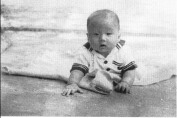 Baby Jackie | |||||||||
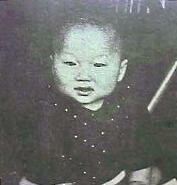 Baby Jackie Too | |||||||||
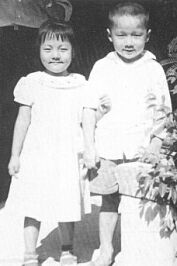 Jackie with childhood friend | |||||||||
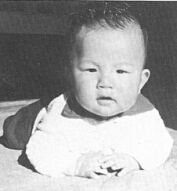 Another baby pose | |||||||||
 Jackie swimming | |||||||||
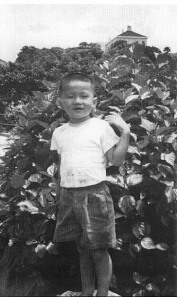 Growing up on Victoria's Peak, Hong Kong | |||||||||
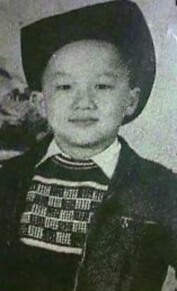 Jackie wearing his cowboy hat | |||||||||
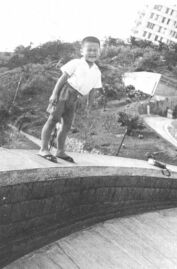 Young Jackie | |||||||||
 Jackie during his time at the China Drama Academy | |||||||||
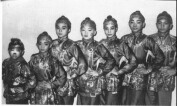 The Seven Little Fortunes (Jackie is in the center) | |||||||||
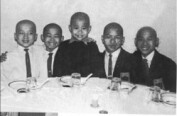 Jackie with his opera school classmates (Jackie is on the left) | |||||||||
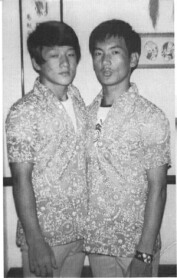 Jackie and director Corey Yuen | |||||||||
 Jackie as a teen | |||||||||
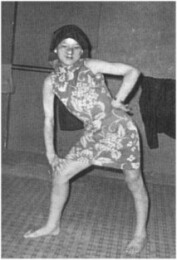 Jackie posing | |||||||||
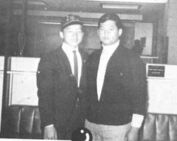 Jackie with Sammo Hung | |||||||||
imanuddin
WOYYYYY
wellcome to my bloog
my name imanuddin i'm from pontianak
i student at SMA mujahidin pontianak
enjoy my bloog ^^
my name imanuddin i'm from pontianak
i student at SMA mujahidin pontianak
enjoy my bloog ^^
Jumat, 25 November 2011
my inspiration
Senin, 14 November 2011
ASAL MULA KESULTANAN SABAS
Kesultanan Sambas sebuah Negeri berpenduduk mayoritas Etnis Melayu,dengan luas 20.940 km² ,bandingkan dengan kesultanan Brunai (5.765 km²).
Pada tahun 1915 Negeri Sambas berpenduduk 130.000 jiwa,yang terdiri dari berbagai etnis atau suku kaum :
- Orang Eropa 100 jiwa
- Suku Dayak 26.000 jiwa
- Orang Arab dan Timur asing lainya 270 jiwa
- Cina (tionghoa) 30.000 jiwa
- Melayu Jawa dan Bugis 67.000 jiwa
Pada tahun 1988 Sambas berpenduduk 895.900 jiwa,dan merupakan sebuah kabupaten dibawah kedaulatan NKRI.
Pada masa pemerintahan Sultan Muhhammad Syafi’uddin I yang dinobatkan pada tanggal 10 Zulhijjah hari Senin tahun 1040 H(9 Juli 1631 M ).nama Sambas sudah dipergunakan dan telah dipergunakan jauh sebelum itu …

ISTANA SAMBAS
Di era kerajaan Majapahit dizaman kekuasaan Raja Hayam Wuruk dan Patih Gajah Mada,kerajaan Sambas disebut sebut sebagai satu kerajaan di Borneo yang berada dibawah kekuasaan Maja Pahit,hal ini dibuktikan oleh tulisan Empu Prapanca didalam buku “NEGARA KERTAGAMA” yang dituliskanya tahun 1365 m.
Dalam Pupuh XII dan XIV buku NEGARA KERTAGAMA dituliskan ,kerajaan Nusantara yang berada dibawah kekuasan Majapahit antara lain :
PUPUH XII BUKU NEGARA KERTAGAMA
Menyebutkan “Lawas dengan Samudra serta Lamuri Batam,Lampung dan juga Barus itulah terutama Negara Melayu yang tlah tunduk,Negara Negara dipulau Tanjung Pura :Kapuas_-Katingan,Saampit,Kota Lingga,Kota Waringin,Sambas,Lawai Ikut disebut”.
PUPUH XIV :
“Kandangan ,Landa,Samadang dan Tirem,takterlupakan Sedu,Berune(ng),Kalka Seludung ,Solot dan juga Pasir Barito ,Sawaku ,Tabalung,ikut juga Tanjung Kutei,Malano tetap yang terpenting dipulau Tanjung Pura.”(kutipan tulisan Prop. Dr.Slamet Multono,”Negara Kertagama Tafsir dan Sejarahnya”.penerbit Bharata,Jakarta 1979 hal 280 )
Pabila buku Negara Kertagama(1365) telah menyebut kata “Sambas”kemungkinan kata ini berasal dari bahasa Jawa kuno”Samba” yang berarti bersuka ria atau menari,dalam kamus bahasa Indonesia ‘
“Samba” berarti bersukaria dan dapat diartikan pula kata Sambas kerajaan yang makmur dan sentosa,,beberapa nama sultan Sambas memakai nama tokoh pewayangan,Raden Bima Raden Semar dan Raden Samba ,adapun dalam pewayangan Raden Samba adalah Putra Arjuna.
Namun sampai sekarang belu ditemukan tulisan yang menjelasan asal mula pemakaian kata Sambas,beberapa pendapat yang ada hanya berdasakan cerita turun temurun tanpa ada catatan yang melandasi alas an tersebut.
Penulis buku “ASAL USUL SAMBAS” H.Urai Jalaludin Yusuf Dato’Ronggo
Menjelaskan,
Berdasarkan cerita dongeng rakyat Sambas,nama Sambas berasal dari tiga orang sahabat seorang diantarnya bernama ABBAS,bersama mereka terdapat pula seorang Cina,jadi mereka adalah tiga orang sahabat yang selalu bekerja sama,,didalam bahasa Cina, tiga biasa disebut SAM,,maksud dari kata Sambas adalah kerjasama bertiga dengan Abbas mereka sebutlah Sambas,lama kelamaan nama tersebut semakin populer dan melekatlah kata Sambas yang merupakan symbol kerjasama tiga sahabat.
Dalam cerita lain Dato’Ronggo menyebutkan,asal nama Sambas bermula dari legenda Negeri Kebanaran(Kebenaran) diPaloh,dua orang Sahabat bernama
Syamsudin dan Saribas ,
Syamsudin kawin dengan orang halus(Jin) diNegeri Kebanaran,tetapi kemudian dia menghilang karena diperecayai dia pindah dan ikut berdiam diNegeri Kebanaran.namun jiwa Sam selalu mengikuti sahabatnya Saribas(suku Dayak),,Dimana ada Sam disitu ada Saribas..,itu terjadi karena ketika mereka berada di Muara Ulakan (Sekarang tempat berdirinya Istana Sambas) mereka pernah berikrar berjanji tidak akan ada pertikaian dan saling dendam antara mereka,walau mereka dari suku berdeda (Dayak danMelayu),janji tersebut mereka tandai dengan melempar batu bersama disimpang tiga muara ulakan sambil berikrar tak ada permusuhan,pertikaian,selamanya kecuali batu yang mereka lemparkan bisa mengapung dipermukaan air Muara ulakan..Sejak itu diambilah Nama Sam(dari Syamsudin) dan Bas(dari Saribas) untuk menamai tempat tersebut dengan nama “SAMBAS”,.
Sampai sekarang orang Dayak Maupun Melayu percaya mereka adalah satu kesatuan yang tak dapat dipisahkan dengan semboyan..”IBARAT AUR(Bambu) DAN TEBING” selalu terikat dan memerlukan satu sama lain,hal tersebut dapat terlihat disaat kerusuhan etnis berdarah tahun 1999,persaudaraan mereka tetap kokoh dan tak pernah goyah…….(BERDASARKAN CERITA DONGENG RAKYAT SAMBAS)….

MESJID JAMI’ SAMBAS.DITEPIAN SUNGAI SAMBAS
Masih banyak cerita cerita tentang asal mula dipergunakannya istilah kata Sambas.,dilain kesempatan saya akan menulisnya,agar dapat kiranya anda berikan masukan saran kritik,dan komentar,agar apa yang saya tulis tak sia sia….saya tunggu komentar anda...
ALBERTKENNEDY972@GMAIL.COM
ALBERT.KENNEDY@ROCKETMAIL.COM
Pada tahun 1915 Negeri Sambas berpenduduk 130.000 jiwa,yang terdiri dari berbagai etnis atau suku kaum :
- Orang Eropa 100 jiwa
- Suku Dayak 26.000 jiwa
- Orang Arab dan Timur asing lainya 270 jiwa
- Cina (tionghoa) 30.000 jiwa
- Melayu Jawa dan Bugis 67.000 jiwa
Pada tahun 1988 Sambas berpenduduk 895.900 jiwa,dan merupakan sebuah kabupaten dibawah kedaulatan NKRI.
Pada masa pemerintahan Sultan Muhhammad Syafi’uddin I yang dinobatkan pada tanggal 10 Zulhijjah hari Senin tahun 1040 H(9 Juli 1631 M ).nama Sambas sudah dipergunakan dan telah dipergunakan jauh sebelum itu …

ISTANA SAMBAS
Di era kerajaan Majapahit dizaman kekuasaan Raja Hayam Wuruk dan Patih Gajah Mada,kerajaan Sambas disebut sebut sebagai satu kerajaan di Borneo yang berada dibawah kekuasaan Maja Pahit,hal ini dibuktikan oleh tulisan Empu Prapanca didalam buku “NEGARA KERTAGAMA” yang dituliskanya tahun 1365 m.
Dalam Pupuh XII dan XIV buku NEGARA KERTAGAMA dituliskan ,kerajaan Nusantara yang berada dibawah kekuasan Majapahit antara lain :
PUPUH XII BUKU NEGARA KERTAGAMA
Menyebutkan “Lawas dengan Samudra serta Lamuri Batam,Lampung dan juga Barus itulah terutama Negara Melayu yang tlah tunduk,Negara Negara dipulau Tanjung Pura :Kapuas_-Katingan,Saampit,Kota Lingga,Kota Waringin,Sambas,Lawai Ikut disebut”.
PUPUH XIV :
“Kandangan ,Landa,Samadang dan Tirem,takterlupakan Sedu,Berune(ng),Kalka Seludung ,Solot dan juga Pasir Barito ,Sawaku ,Tabalung,ikut juga Tanjung Kutei,Malano tetap yang terpenting dipulau Tanjung Pura.”(kutipan tulisan Prop. Dr.Slamet Multono,”Negara Kertagama Tafsir dan Sejarahnya”.penerbit Bharata,Jakarta 1979 hal 280 )
Pabila buku Negara Kertagama(1365) telah menyebut kata “Sambas”kemungkinan kata ini berasal dari bahasa Jawa kuno”Samba” yang berarti bersuka ria atau menari,dalam kamus bahasa Indonesia ‘
“Samba” berarti bersukaria dan dapat diartikan pula kata Sambas kerajaan yang makmur dan sentosa,,beberapa nama sultan Sambas memakai nama tokoh pewayangan,Raden Bima Raden Semar dan Raden Samba ,adapun dalam pewayangan Raden Samba adalah Putra Arjuna.
Namun sampai sekarang belu ditemukan tulisan yang menjelasan asal mula pemakaian kata Sambas,beberapa pendapat yang ada hanya berdasakan cerita turun temurun tanpa ada catatan yang melandasi alas an tersebut.
Penulis buku “ASAL USUL SAMBAS” H.Urai Jalaludin Yusuf Dato’Ronggo
Menjelaskan,
Berdasarkan cerita dongeng rakyat Sambas,nama Sambas berasal dari tiga orang sahabat seorang diantarnya bernama ABBAS,bersama mereka terdapat pula seorang Cina,jadi mereka adalah tiga orang sahabat yang selalu bekerja sama,,didalam bahasa Cina, tiga biasa disebut SAM,,maksud dari kata Sambas adalah kerjasama bertiga dengan Abbas mereka sebutlah Sambas,lama kelamaan nama tersebut semakin populer dan melekatlah kata Sambas yang merupakan symbol kerjasama tiga sahabat.
Dalam cerita lain Dato’Ronggo menyebutkan,asal nama Sambas bermula dari legenda Negeri Kebanaran(Kebenaran) diPaloh,dua orang Sahabat bernama
Syamsudin dan Saribas ,
Syamsudin kawin dengan orang halus(Jin) diNegeri Kebanaran,tetapi kemudian dia menghilang karena diperecayai dia pindah dan ikut berdiam diNegeri Kebanaran.namun jiwa Sam selalu mengikuti sahabatnya Saribas(suku Dayak),,Dimana ada Sam disitu ada Saribas..,itu terjadi karena ketika mereka berada di Muara Ulakan (Sekarang tempat berdirinya Istana Sambas) mereka pernah berikrar berjanji tidak akan ada pertikaian dan saling dendam antara mereka,walau mereka dari suku berdeda (Dayak danMelayu),janji tersebut mereka tandai dengan melempar batu bersama disimpang tiga muara ulakan sambil berikrar tak ada permusuhan,pertikaian,selamanya kecuali batu yang mereka lemparkan bisa mengapung dipermukaan air Muara ulakan..Sejak itu diambilah Nama Sam(dari Syamsudin) dan Bas(dari Saribas) untuk menamai tempat tersebut dengan nama “SAMBAS”,.
Sampai sekarang orang Dayak Maupun Melayu percaya mereka adalah satu kesatuan yang tak dapat dipisahkan dengan semboyan..”IBARAT AUR(Bambu) DAN TEBING” selalu terikat dan memerlukan satu sama lain,hal tersebut dapat terlihat disaat kerusuhan etnis berdarah tahun 1999,persaudaraan mereka tetap kokoh dan tak pernah goyah…….(BERDASARKAN CERITA DONGENG RAKYAT SAMBAS)….

MESJID JAMI’ SAMBAS.DITEPIAN SUNGAI SAMBAS
Masih banyak cerita cerita tentang asal mula dipergunakannya istilah kata Sambas.,dilain kesempatan saya akan menulisnya,agar dapat kiranya anda berikan masukan saran kritik,dan komentar,agar apa yang saya tulis tak sia sia….saya tunggu komentar anda...
ALBERTKENNEDY972@GMAIL.COM
ALBERT.KENNEDY@ROCKETMAIL.COM
Label: SEJARAH
Jumat, 21 Oktober 2011
Langganan:
Komentar (Atom)

